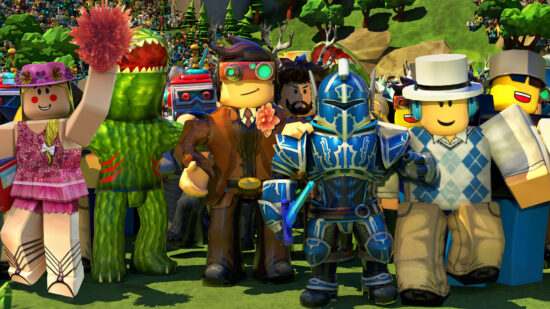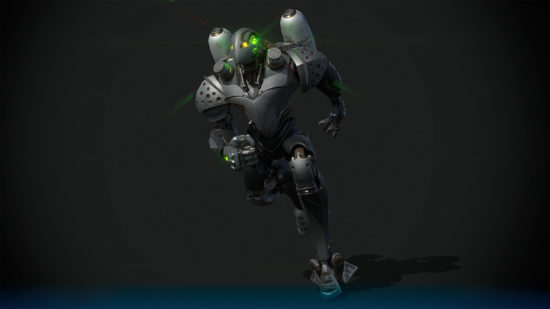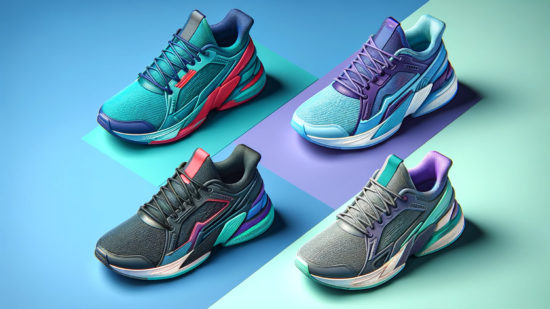Technological advancements often hinge on introducing innovative products or methods that revolutionize existing markets. Such is the case in 3D design file formats, where the GLB file format has emerged as a pivotal player. This format has swiftly demonstrated its superiority and efficiency, becoming a new benchmark in the industry.
The growing acceptance of the GLB format, particularly among leading design services, underscores its importance. For businesses and individual users keen to keep pace with the latest in 3D design technology, adopting the GLB file format is a strategic move. Understanding what a GLB file is and its functionalities is essential for anyone looking to capitalize on its advantages. Comprehensive information about the GLB file format, aimed at facilitating its integration into your business or creative projects, is available.
The increasing prevalence of the GLB file format in the 3D design industry marks a significant shift in preference and technique. GLB is becoming the standard choice for many professionals as a flexible and powerful file format, indicating a significant shift in 3D content creation and management. This change presents a crucial opportunity for individuals and every professional art outsourcing studio to familiarize themselves with and incorporate the GLB file format into their digital repertoire. Such integration can unlock new dimensions of creativity and efficiency, enhancing the quality and scope of 3D design projects.
What Is GLB and How Does It Work?
The GLB file format, a cornerstone in 3D imaging and scene rendering, allows users to explore models and scenes comprehensively. When a GLB file is opened, it presents the model or scene in a multi-dimensional view, offering detailed perspectives from various angles. This file format is akin to the well-known JPG format used for static images but for the 3D world.
The GLB format stands out for its optimal balance of minimal file size with reasonably high-quality detail. While it might not match the intricate detail level of most FBX files, the GLB file format is highly efficient in its compactness, encapsulating an array of 3D assets within a single file. Introduced in 2015, the GLB file format is a newer, more streamlined iteration of the Graphics Language Transmission Format (GLTF).
The primary distinction between GLB and its predecessor, GLTF, lies in their structural composition. The GLB file format is binary, making it more succinct and efficient in data handling, whereas GLTF is based on the JSON format. A notable point of comparison is that GLTF files are approximately 33% larger than their GLB counterparts and lack some of the auxiliary data found in GLB files, such as geometry, textures, and shaders. Once created, the GLB format offers versatility in its usage. GLB files are compatible with a variety of viewers, including platforms like Sketchfab, PlayCanvas, and Babylon.
Their adaptability extends beyond simple viewing; these files can be seamlessly integrated into various applications spanning web, mobile, and virtual reality environments. This universal applicability of the GLB file format makes it an invaluable tool in diverse fields such as gaming, virtual reality, architectural visualization, and online retail, where detailed 3D representation is crucial. The GLB format, therefore, stands as a testament to the evolution of 3D file formats, marrying efficiency with functionality and paving the way for more immersive and detailed digital experiences.
You can try GLB model created by 3D-Ace right in your browser:
How Does GLB Compare to Other Formats?
If you are wondering which format to use to present your 3D assets, you can choose from almost a dozen options. Still, GLB offers several notable advantages and unique qualities:
1) It is incredibly lightweight. A .glb file with a size of 7 MB can easily reach a size of 37 MB or more with another extension (such as .fbx).
2) This is the only format that contains a full PBR shader and textures. Thus, it offers comprehensive data about the characteristics of materials in the 3D asset.
3) Unlike static formats like .obj, .glb can contain dynamic elements like animation. This adds substantially to its expressive and educational value.
4) Such files can be viewed near-instantaneously, with no coding required. The single-file format of GLB assets makes them very easy to view and access, in contrast with .FBX files that would require additional configuration.
In terms of drawbacks, the small size of .glb files is as much a weakness as it is a strength. Thus, while they are optimized for web and mobile platforms (including AR), they may not carry the amount of detail, material complexity, and polygons needed for larger projects like desktop applications.
What Is the Difference between the GLB and GLTF Files?
| Feature | GLB File Format | GLTF File Format |
| Basic Description | A binary version of the GLTF file format. | A JSON-based format for 3D models and scenes. |
| Primary Use | Perfect for web applications due to its compact and rapid loading nature. | Suited for development and editing with a clear text format. |
| Asset Consolidation | Consolidates textures, animations, and models into a single file. | Stores textures and other resources separately. |
| Advantages | Simplifies sharing and distribution; preferred for online 3D content. | Offers more flexibility in editing and customization. |
| File Size | Generally smaller, efficient for quick loading times. | Larger file sizes due to separate storage of resources. |
| Ideal For | Efficient transmission and use on the web. | Projects requiring extensive editing and flexibility. |
Where Can You Use GLB?
If your business uses 3D models, scenes, and animations, this format may be perfect for you. Let’s examine some of its uses and examples.
Popular Use Cases
-
Presentations
The GLB file format presents various subjects, ranging from products and architectural structures to intricate processes and lifelike characters. What sets the GLB format apart is its ability to enable dynamic movement and animation within these presentations. This feature offers a stark contrast to static models, imbuing a sense of life and motion into the displayed items. Furthermore, unlike traditional video formats, the GLB format introduces an interactive element, allowing users to examine the asset closely and at their own pace. This interactivity enhances the user experience, making the GLB format an ideal choice for detailed and engaging presentations.
-
eCommerce
In the eCommerce sector, utilizing the GLB file format can significantly elevate sales strategies. By providing customers with high-quality marketing materials and detailed product profiles in the GLB format, businesses can offer a unique and captivating shopping experience. This approach is particularly effective when compared to the conventional use of videos and static images. The immersive and interactive nature of the GLB file format can set a business apart from its competitors, who may still rely on more traditional, less engaging formats.
-
Education
For educational institutions and companies focused on training and development, incorporating GLB files into their educational materials can be a transformative step. The versatility of the GLB file format allows for its integration into various teaching mediums. Educators and trainers can access these files individually or embed them into larger applications or media objects, enhancing the learning experience with interactive 3D content. This addition can significantly enrich educational and training programs, making complex concepts more accessible and engaging for learners.
-
Games & Entertainment
The GLB format has gained immense popularity in the gaming and entertainment industry, particularly among game developers. Its ability to store work in cohesive bundles makes it a preferred choice for seamless integration into game engines. This efficiency is invaluable in developing adventure and text-based games that leverage the Glulx virtual machine. By utilizing the GLB file format, developers can ensure a smoother and more efficient workflow, facilitating the creation of rich, immersive gaming experiences. The GLB format’s capacity to handle complex 3D models and animations effectively makes it an essential tool in the entertainment sector’s arsenal of game developers and digital artists.
Supported platforms
Online viewers offer a straightforward and accessible method for viewing GLB files, but their utility extends far beyond this singular approach. The GLB file format can be showcased across various platforms and in multiple formats, enhancing its accessibility and user engagement. You can make your assets available in multiple ways and platforms:
-
Websites
For website integration, leveraging the right coding techniques and effectively utilizing tools like BabylonJS can enable direct viewing of GLB files on web pages. This integration is particularly advantageous for online stores, allowing customers to interact with products more engaging and realistically. Beyond simple viewing, websites can incorporate a layer of WebAR experience, especially for mobile users, adding a dimension of immersion and interactivity to the online shopping experience.
-
Mobile applications
One common concern among users is the excessive storage space of large apps. However, due to the lightweight and compressed nature of the GLB file format, applications incorporating these files typically maintain a modest size. This efficiency is achieved through the use of engines like Unity or Unreal Engine, which facilitate the seamless importation of GLB assets into the software, ensuring that the application remains user-friendly in terms of storage requirements.
-
Immersive experiences
Immersive experiences, such as those offered in virtual and mixed reality applications, often necessitate larger and more detailed 3D assets. However, augmented reality applications, primarily accessed on mobile devices like phones and tablets, find a more suitable match in the GLB file format. The format’s unique characteristics make it ideal for these types of applications, where efficiency and detail are equally important.
-
Social media
The X social platform (former Twitter) has emerged as a frontrunner in supporting 3D file formats. Through its partnership with Sketchfab, Twitter has enabled users to conveniently access and share 3D content. By uploading an asset to Sketchfab and sharing the corresponding link, users can easily make their GLB files accessible to a broader audience. Although Facebook previously supported 3D posts and later discontinued them, this feature is hoped to be reinstated. As the trend grows, it’s anticipated that other social networks will also adopt support for 3D file formats, further expanding the reach and application of the GLB file format in the social media domain.
How Are GLB Files Created?
Expert tip — choosing the right software
Our company has worked with a wide range of software that supports the .glb format, and identified one program that is superior — Blender. We found major issues and a lack of support in all the other programs we tried. For example, making the files in Maya requires a special script, while Blender is designed to support this format by default.
Thus, you have access to a tailored menu and can quickly configure the materials and bone rigging of your assets — two things that are missing in Maya and alternatives. Furthermore, Blender performs the export process fastest, and you can see the results right after completion.
How to Convert GLB Files?
Converting files into the GLB format, a versatile and increasingly popular 3D file format, involves a series of steps tailored to ensure the integrity and functionality of the final product. Understanding how to convert various file formats into the GLB format is crucial for professionals and hobbyists in 3D modeling, gaming, virtual reality, and augmented reality. This guide provides a comprehensive walkthrough of the conversion process, emphasizing the use of the GLB file format.
Understanding the GLB File Format
Before diving into the conversion process, it’s essential to grasp what a GLB file is. The GLB file format is a binary version of the Graphics Language Transmission Format (GLTF), optimized for efficient loading and compact file size while maintaining high-quality 3D content. This file format is particularly favored for its compatibility with various platforms and its ability to support detailed textures, animations, and other 3D assets in a single file.
Step 1: Preparing Your Source File
The initial step in converting to the GLB format involves preparing the source file, which could be in formats like OBJ, FBX, or even GLTF. It’s vital to ensure that all necessary components — textures, animations, and 3D models – are complete and correctly aligned. Missing elements in the original file will not be automatically generated in the GLB file; they must be added or corrected before conversion.
Step 2: Choosing the Right Conversion Tool
Selecting an appropriate conversion tool is the next critical step. Numerous online and offline tools can convert various 3D file formats to the GLB format. Some popular tools include Blender, Adobe Mixamo, and online converters like OBJ2GLTF. Each tool has its strengths, and the choice depends on factors like ease of use, the complexity of the file, and specific requirements of the GLB file.
Step 3: Executing the Conversion
Once you’ve chosen your tool, load your source file into the software. In the conversion tool, specify that you wish to convert the file to the GLB file format. Depending on the software, you might have additional options to adjust settings such as texture compression, file size, and animation details. These settings are critical as they influence the quality and usability of the final GLB file.
Step 4: Verifying and Optimizing the Converted File
After the file has been converted into the GLB format, it’s essential to verify its integrity. Open the GLB file in a suitable viewer or engine to check if all elements like textures, animations, and 3D models appear as expected. If discrepancies are found, adjustments may be needed either in the original file or the conversion settings.
Step 5: Exporting and Using the GLB File
The final step involves exporting the verified GLB file for its intended use. The GLB file format’s compatibility with various platforms makes it suitable for numerous applications, from web-based 3D models to immersive VR experiences. Ensure that the exported file meets the technical requirements of the platform where it will be used, such as specific compression rates or file sizes.
The Result
Converting files to the GLB format is a process that requires attention to detail, the right tools, and an understanding of the GLB file format’s capabilities and requirements. By following these steps, you can efficiently convert your 3D assets into the GLB format, making them ready for a wide range of applications and platforms. The versatility and efficiency of the GLB file format make it an excellent choice for professionals seeking to optimize their 3D content for cross-platform use.
How You Can Use GLB for Your Business
You have a broad choice of options available when it comes to presenting your products and services in .glb format: you can add the files to your website or even turn them into an immersive experience You can also target mobile users and build an app with hundreds of assets. If you are making a game, you can look at using the format for various characters, scenes, and settings. This is just scratching the surface of all the possibilities available.
Who Can Help Me Get the GLB Files I Need?
GLB design and generation is still a rather limited niche in the talent market of designers and artists, so finding a reliable partner is no walk in the park. 3D-Ace is one of the few professional studios providing this service, and we can create these files in large quantities (e.g. for every item in your web store).
We also offer a wide range of additional art services (modeling, texturing, implementation into software), which allows us to address many of your art and software needs together and in quick time frames. If you want to know more and start moving forward with your project, just contact us today!










